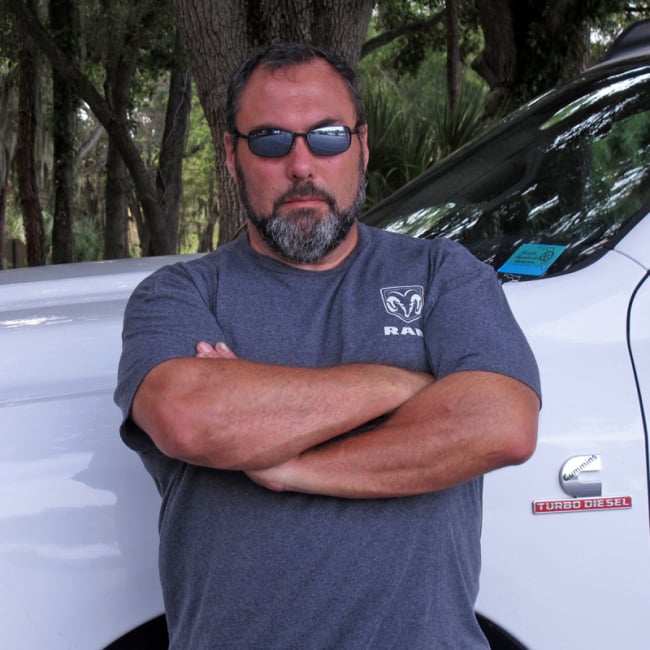When it comes to choosing a project car, it’s a good thing that car enthusiasts have varied tastes. Just imagine how boring the hobby would be if we all enjoyed the same make and model car. Mike Guido’s automotive tastes definitely veer from what some might consider normal, as evidenced by his 1980 Malibu.
The interior is stock, save for the aftermarket gauges and radio.
The boxy Malibu is definitely not on many enthusiasts’ radar when it comes to contemplating the perfect project. As with most vehicles spawned from the early ’80s, Rust and poor build quality have made them forgettable. Even when new, they were inexpensive, haphazardly put together, and then unceremoniously pushed out the door to dealers. Fortunately, a few hot rodders like Mike, like to be different.
It was in 2008, and Mike was just 18 years old when he purchased his 1980 Malibu. He was happy to tell us, “I bought the car from an older gentleman in Ballston Spa, New York. It wasn’t in too bad of shape, especially on the outside. The paint was in good condition and just needed a good buff and detail job.” Underneath though, the New York weather had taken its toll.
The cars from the ‘80s – or from any era, usually had a short life expectancy in the northeast portion of the U.S. The winter road conditions wreak havoc on a car’s sheetmetal, and this Malibu was no exception. Mike affirmed, “The car was completely stock when I bought it, and the rear frame was rusted. As soon as I brought it home, I disassembled the car to its bare bones, and repaired the frame, and then undercoated it.”
As Mike mentioned, the paint was decent, and he was happy to give it a good polishing, but in true performance-minded fashion, the engine was not something that Mike could leave untouched. Under the hood is a 383 cubic-inch stroker with a Scat crankshaft and connecting rods. A set of Keith Black hypereutectic pistons creates the 9.5:1 compression ratio under the aluminum heads. Deep inside the block is a Doug Herbert camshaft with .610/610-inch lift, and 255 degrees of duration. Up top, an Edelbrock Performer RPM intake and a Holley carburetor feed the required air and fuel into the cylinders. Finally, a Milodon oiling system and Hooker headers round out the power building.
The ability to harness all that power falls on the Turbo 350 transmission that has the benefit of a rebuild and shift improver kit, as well as a 2,800 rpm-stall torque converter. Rounding out the package is a bit of a surprise, as Mike is still using the 7.5-inch rearend. The small differential spins a 3.73 gear set on a factory GM Positraction unit. While not considered a great rearend for high-performance usage, Mike stated, “With this setup, the car has run a best of 12.35 seconds in the quarter-mile at 114 m.p.h. at Lebanon Valley Speedway.”
Inside, the car still has a stock 1980 Malibu interior including a bench seat. It was all in decent shape but also needed a good cleaning. Mike finished our conversation by saying, “For the last 8-1/2 years, I have spent many hours fixing and tinkering with it, and have built this car myself.” Any way you look at it, that makes this a true home-Built Hero and winner in our book.
Do you want to read about more Home-Built Heros? All you need to do is click here. If you own a Home-Built Hero, we want to hear about it. Since we started the series, we have received more than a few candidates, but we still want to see more – we can never get enough. If you want to see more cars built by you the readers, send us a few pictures of your car showing the engine, interior, and exterior, along with all of the pertinent information, and we’ll make you Internet famous. You can send your submissions to chevyhardcore@powerautomedia.com.
























